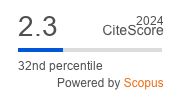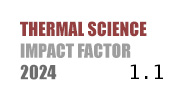ABSTRACT
Since its discovery, computer technology has played a key role in changing the lifestyles of people and continues to provide countless benefits. Nevertheless, computer technology systems that facilitate smooth integration, such as, cloud computing; are prone to cyber breaches, which has negatively affected its reputation and perception. Therefore, computer technology systems that are secure are needed to curb cyber threats and increase user trust. The primary issue in computer technology systems is that, unlike alternative methods, most cloud access control mechanisms are inadequate. Furthermore, transitioning to a trust-based mechanism is not only complicated and costly but a significantly decision intensive process. As such, this present study investigates how network risks and threats analysis, edge computing and Arbiter, a mandatory access control mechanism, can be integrated into cloud computing to prevent single points of failure. It also examines how these integrating components can decrease the costs and effort required to change an entire operating system to meet the requirements of a trusted system.
KEYWORDS
PAPER SUBMITTED: 2024-06-23
PAPER REVISED: 2024-09-18
PAPER ACCEPTED: 2024-10-30
PUBLISHED ONLINE: 2025-01-25
THERMAL SCIENCE YEAR
2024, VOLUME
28, ISSUE
Issue 6, PAGES [4969 - 4977]
- Davison, C. B., et al., Factors for Cloud Computing Technology Adoption: An Exploration of Scaling Strategies, Journal of Technology Research, 9 (2020), pp. 1-11
- Chang, C., et al., Internet of Things (IoT) and New Computing Paradigms, Fog and Edge Computing: Principles and Paradigms, 6 (2019), Jan., pp. 1-23
- Singh, S. P., et al., Fog Computing: From Architecture to Edge Computing and Big Data Processing, The Journal of Supercomputing, 75 (2019), Nov., pp. 2070-2105
- Xu, Q., et al., Secure Multi-Authority Data Access Control Scheme in Cloud Storage System Based on Attribute-Based Signcryption, IEEE Access, 6 (2018), June, pp. 34051-34074
- Jessintha, J. P., Anbuselvi, R., Behaviour Analysis Model with Level Based Access Restriction Algorithm for Cloud Security Development, International Journal of Advanced Research in Computer Science, 9 (2018), 1
- Chang, V., et al., Cloud Computing Adoption Framework: A security Framework for Business Clouds, Future Generation Computer Systems, 57 (2016), Apr., pp. 24-41
- Trope, R. L., Ressler, E. K., Mettle Fatigue: VW's Single-Point-of-Failure Ethics, IEEE Security and Privacy, 14 (2016), 1, pp. 12-30
- Saeed, R., et al., An Automated System to Predict Popular Cybersecurity News Using Document Embeddings, CMES-Computer Modelling in Engineering and Sciences, 127 (2021), 2
- Kabir, S., Papadopoulos, Y., Computational intelligence for safety assurance of cooperative systems of systems. Computer, 53 (2020), 12, pp. 24-34
- Al-Marhabi, K., Arbiter: A Lightweight, Secured and Enhanced Access Control Mechanism for Cloud Computing, Proceedings, IEEE International Conference on Electrical, Computer and Communication Technologies (ICECCT), Coimbatore, India, 2019, pp. 1-5
- Hachem, J. E., et al., Modelling, Analyzing and Predicting Security Cascading Attacks in Smart Buildings Systems-of-Systems, Journal of Systems and Software, 162 (2020), 110484
- Singh, M. P., et al., A Role-Based Administrative Model for Administration of Heterogeneous Access Control Policies and Its Security Analysis, Information Systems Frontiers, 2021, doi.org/10.1007/ s10796-021-10167-z
- Benantar, M., Access Control Systems: Security, Identity Management and Trust Models, Springer Science and Business Media, Berlin, Germany, 2005
- Kuhn, D. R., Chandramouli, R., Role-based Access Control [Electronic Resource], Artech House, 2003
- Bates, A., et al., Take Only what You Need: Leveraging Mandatory Access Control Policy to Reduce Provenance Storage Costs, Proceedings, 7th USENIX Workshop on the Theory and Practice of Provenance (TaPP 15), Edinburg, Scotland, UK, 2015
- Biswas, P., et al., A Unified Administrative Model for Role-Based Access Control, In Information Security, Proceedings, 19th International Conference, ISC 2016, Honolulu, Hi., USA, 2016, pp. 218-230
- Xue, K., et al. Combining Data Owner-Side and Cloud-Side Access Control for Encrypted Cloud Storage, IEEE Transactions on Information Forensics and Security, 13 (2018), 8, pp. 2062-2074
- Liu, T., Agrawal, P., A trusted integrity measurement architecture for securing enterprise network, Proceedings, IEEE 10th International Conference on Trust, Security and Privacy in Computing and Communications, Changsha, China, 2011, pp. 726-731
- Wadhwa, A., Gupta, V. K., Proposed Framework with Comparative Analysis of Access Control and Authentication Based Security Models Employed over Cloud, International Journal of Applied Engineering Research, 12 (2017), 24, pp.15715-15722
- Marouf, S., Shehab, M., SEGrapher: Visualization-Based SELinux Policy Analysis, Proceedings, 4th Symposium on Configuration Analytics and Automation (SAFECONFIG), Arlington, Va., USA, 2011, pp. 1-8
- Ren, S., Qiu, S., Cheng, K., An Edge Computing Algorithm Based on Multi-Level Star Sensor Cloud, CMES-Computer Modelling in Engineering and Sciences, 136 (2023), 2
- Ren, J., et al., An Edge-Fog-Cloud Computing-Based Digital Twin Model for Prognostics Health Management of Process Manufacturing Systems, CMES-Computer Modelling in Engineering and Sciences, 135 (2023), 1, pp. 599-618
- Huang, J., et al., Towards secure industrial IoT: Blockchain system with credit-based consensus mechanism, IEEE Transactions on Industrial Informatics, 15 (2019), 6, pp. 3680-3689
- Shneiderman, B., Human-Centered Artificial Intelligence: Reliable, Safe and Trustworthy, International Journal of Human-Computer Interaction, 36 (2020), 6, pp. 495-504
- Cadavid, H., et al., Architecting Systems of Systems: A Tertiary Study, Information and Software Technology, 118 (2020), 106202
- Chandra, K., et al., How Designers Use Design Principles: Design Behaviors and Application Modes. Journal of the Association for Information Systems, 23 (2022), 5, pp. 1235-1270
- Lv, Z., et al., Trustworthiness in Industrial IoT Systems Based on Artificial Intelligence, IEEE Transactions on Industrial Informatics, 17 (2020), 2, pp. 1496-1504
- Algarni, S., et al., Blockchain-Based Secured Access Control in an IoT System, Applied Sciences, 11 (2021), 4, 1772
- Mao, B., et al., Security and Privacy on 6G Network Edge: A Survey, IEEE Communications Surveys and Tutorials, 25 (2023), 2, pp. 1095-1127
- Huang, Y., Zhang, W., Research on the Methods of Data Mining based on the Edge Computing for the IoT, Proceedings, IEEE International Conference on Integrated Circuits and Communication Systems (ICICACS), Raichur, India, 2023, pp. 1-6
- Savaglio, C., et al., Data Mining at the IoT Edge, Proceedings, 28th International Conference on Computer Communication and Networks (ICCCN), Valencia, Spain, 2019, pp. 1-6

